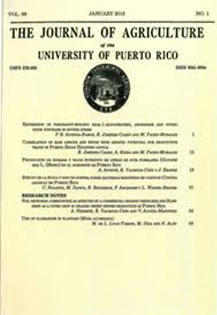Abstract
Heat stress causes detrimental effects on animals, such as dairy cows and heifers, resulting in decreased production and changes in physiological aspects. Some Holsteins carry a mutation in the prolactin receptor (Slick; SL) that causes them to have shorter hair and greater heat tolerance compared with the wild-type (WT) cattle. Slick animals have lower temperatures, greater milk production and shorter calving intervals. The objectives of the current study were to describe monthly weight, reproductive performance, and mortality rates of the SL Holstein compared with the WT. Experiments were conducted at the Agricultural Experiment Substation in Gurabo, Puerto Rico, to determine average monthly weights of 88 heifers (40 SL and 48 WT) born between 2017 and 2020. Heifers’ estrus (n=22 SL; n=27 WT) was synchronized followed by timed artificial insemination to determine differences in pregnancy rates. A subset of lactating cows was used to compare number of services required for pregnancy. Mortality frequency between genotypes was analyzed and compared. Data were analyzed using SAS University Edition, 2018 Proc-GLIMMIX and Tukey test. Compared to WT heifers, SL heifers were heavier after 14 months, required one to two fewer insemination services and died at a lower frequency rate (22% vs. 78%). Genetically selecting heat tolerant SL cows over WT may improve reproductive performance.

